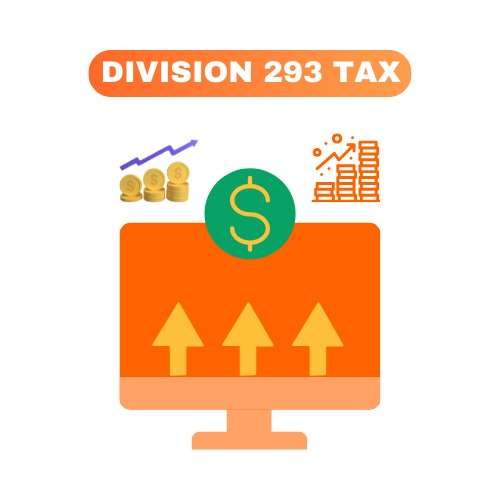Imagine working hard all your life to secure a comfortable retirement, only to find an unexpected tax nibbling away at your nest egg. Welcome to the world of Division 293 tax—a fiscal twist in Australia’s tax system targeting high-income earners to ensure the fairness of superannuation benefits. As your income climbs, so does your contribution to the nation’s coffers through this tax. Understanding Division 293 is not just about compliance; it’s about smart financial planning to safeguard your future. So, let’s dive in and unravel the complexities of this tax and its implications for your hard-earned money.
Introduction to Division 293 Tax
What is Division 293 Tax?
The Div 293 tax is an Australian tax aimed at narrowing the gap in the tax benefits obtained from superannuation contributions between high-income earners and the average taxpayer. Essentially, it imposes an additional 15% tax on certain super contributions made by or for individuals whose income exceeds a specified threshold. This comes in addition to the standard 15% tax that is already levied on concessional super contributions, effectively doubling the tax rate for those who fall into the high-income category. It aims to create fairer and more sustainable tax concessions as the population ages and retirement savings demand grows.
How Did Division 293 Tax Come About?
The Division 293 Tax was introduced in the 2012-2013 Federal Budget and came into effect on July 1, 2012. It was part of a reform package aimed at strengthening the financial sustainability of Australia’s superannuation system. To address the unequal tax benefits favouring high-income earners, the government introduced Division 293. The goal was to align superannuation tax discounts with other income sources, which would promote tax equity across income levels.
The Objective of Division 293 Tax
How it Affects High-Income Earners
The advent of Division 293 Tax meant that individuals with an income and concessional superannuation contributions totalling over a certain cap, initially $300,000, later adjusted to $250,000, would be taxed at a higher rate on their super contributions. High-income earners are defined for the purposes of this tax as individuals whose ‘income for surcharge purposes’ plus ‘low tax contributions’ exceed the Division 293 threshold. This extra tax aims to bring down the tax advantage that high-income earners get on their super contributions to align it more closely with what average-income earners receive. This makes super-tax benefits more equitable across income levels.
How Does it Work?
The Australian government designed the Division 293 tax as a measure to reduce the tax concession on superannuation contributions for individuals with higher incomes. This ensures that the tax benefits of contributing to superannuation do not disproportionately benefit high-income earners. Here’s how it works:
- Income Parameters: This measure kicks in when an individual’s total income and pre-tax super contributions exceed a $250,000 benchmark within a given fiscal year.
- Tax Computation: Individuals crossing this income marker face an extra 15% tax on either their concessional contributions or on the sum that surpasses the income cap, whichever is less. This is on top of the universal 15% tax applied to pre-tax super contributions.
- Qualifying Contributions: Employer and tax-deductible personal payments, often by self-employed professionals, are concessional contributions.
- Surcharge Implications: Contributions exceeding the cap are subject to an increased tax rate of 30%, while those below the cap still receive the standard rate.
- Assessment Procedure: The Australian Tax Office (ATO) determines who owes this tax based on individuals’ tax returns and super fund reports. Those who are liable will be notified and can settle the tax directly or through their super funds.
- Payment Deferral: There are circumstances where this tax payment can be deferred, especially when an individual’s super balance is less than the tax due, which is an important consideration for members of defined benefit funds.
The goal of this measure is to ensure a fairer distribution of tax benefits from super contributions, bridging the gap between higher-income earners and other taxpayers.
Calculating Division 293 Tax

Determining Your Total Income
For Division 293 Tax, your total income includes taxable income, reportable fringe benefits, total net investment loss (including net rental losses), reportable super contributions (both concessional and personal deductible contributions), and any income for which family trust distribution tax has been paid. It’s essential to calculate this total accurately, as it dictates whether you’ll be liable for it. An average calculator can help estimate some of these income components. The ATO uses this income definition to identify individuals whose income and super contributions exceed the Division 293 threshold. If you’re uncertain about your total income components or how to calculate them, it’s wise to consult a tax professional. They can provide guidance and ensure you consider all relevant income streams to avoid unexpected tax liabilities.
The Thresholds and Rates of Division 293 Tax
The Div 293 tax applies when your income and concessional super contributions exceed $250,000 AUD. It’s a 15% tax on the lesser of your concessional contributions above $25,000 or the amount over $250,000. This effectively doubles the usual 15% tax rate applied to concessional super contributions for those who exceed the income threshold. Staying updated on rate and threshold changes is crucial because they can impact your annual tax responsibilities.
The Impact of Division 293 Tax
On Superannuation Contributions
Division 293 Tax directly impacts high-income earners by taxing their superannuation contributions at a higher rate. The standard 15% tax rate on super contributions doubles to 30% for those surpassing the Division 293 income threshold. This means that if you are a high-earner, you need to be more strategic about your super contributions. Knowing about the tax when you’re above the threshold is key to making informed decisions on your contribution strategies, and optimizing your tax situation, and superannuation results.
On Retirement Strategies
Considering Division 293 Tax is pivotal in planning for retirement, particularly for high-income earners. The additional tax could potentially diminish the benefits of the concessional contributions you’re relying on to bolster your retirement savings. Therefore, it’s crucial to incorporate Division 293 into your retirement planning early on. It may involve altering your super contributions, exploring non-concessional contributions, or exploring other retirement savings options for better tax efficiency. Remember, effective retirement planning isn’t just about tax management but also securing a stable income in your post-working years.
Avoiding Common Mistakes
When dealing with Division 293 Tax, it’s crucial to navigate the complexities accurately to avoid common pitfalls:
- Not Updating Personal Details: Ensure your contact details are current with the ATO and your super fund to receive all relevant correspondence.
- Misunderstanding the Income Threshold: Know that the $250,000 threshold includes all taxable income, reportable fringe benefits, and concessional super contributions.
- Incorrect Reporting: Double-check all reported income and contribution amounts. Errors can lead to unexpected tax liabilities.
- Overlooking Notices: Don’t ignore Division 293 tax assessments or decision notices. Act promptly to understand your obligations.
- Missing Records: Keep thorough records of your income and super contributions to support your tax position if the ATO asks for them.
- Neglecting to Plan: High-income earners should proactively manage their finances with Division 293 Tax in mind to avoid surprise tax bills.
- Assuming Exemptions: Some may wrongly assume they’re exempt from this tax. It applies to most high-income earners, including those within public sector super funds.
Understanding these points can help in avoiding mistakes that may lead to underestimating tax liability or incurring penalties.
Conclusion
Division 293 tax serves as a balancing mechanism within Australia’s tax system, ensuring that the advantages of superannuation contributions are distributed more equitably among taxpayers, regardless of income. It underscores the importance of strategic financial planning and highlights the intricacies of tax legislation that high-income earners must navigate. As it stands, it may influence your retirement planning and the timing of your contributions. So, how does this tax influence your long-term financial strategies, and have you considered its impact on your superannuation benefits?
FAQs
1. What determines if I’m liable for Division 293 tax?
Your liability for this is determined if your combined income and concessional superannuation contributions exceed the $250,000 threshold.
2. Can the Division 293 tax affect my concessional super contribution cap?
No, it doesn’t affect the cap on concessional contributions; it’s an additional tax on those contributions if you’re a high-income earner.
3. How can I pay the Division 293 tax if it assesses me?
You can pay it using personal funds or release authority to withdraw from your super fund, depending on your preference and financial situation.
4. Is it possible to object to a Division 293 tax assessment?
To contest an incorrect assessment, you can file a formal dispute with the Australian Taxation Office (ATO).
5. Does the div 293 tax apply to both residents and non-residents of Australia?
It applies to both Australian residents and non-residents for their concessional super contributions linked to Australian employment.

